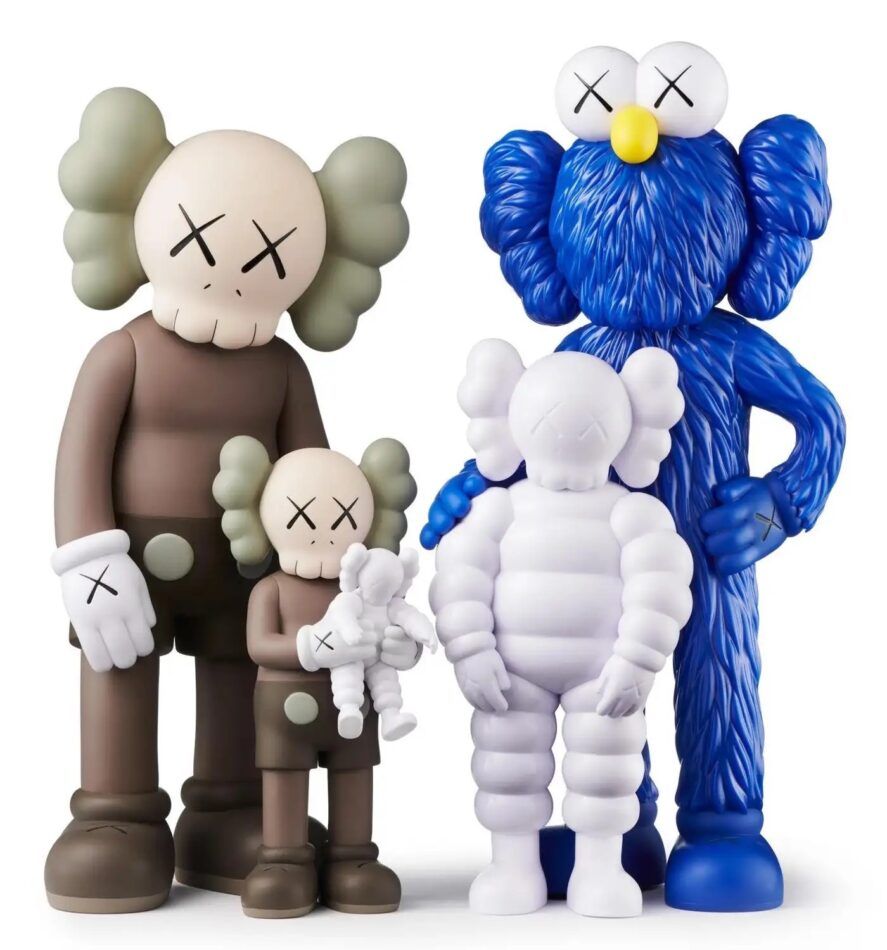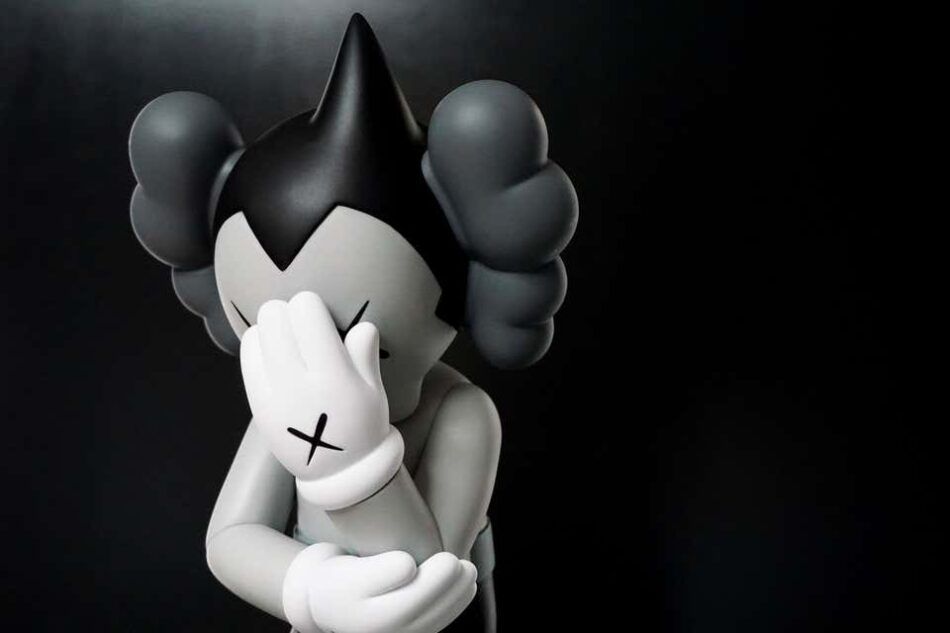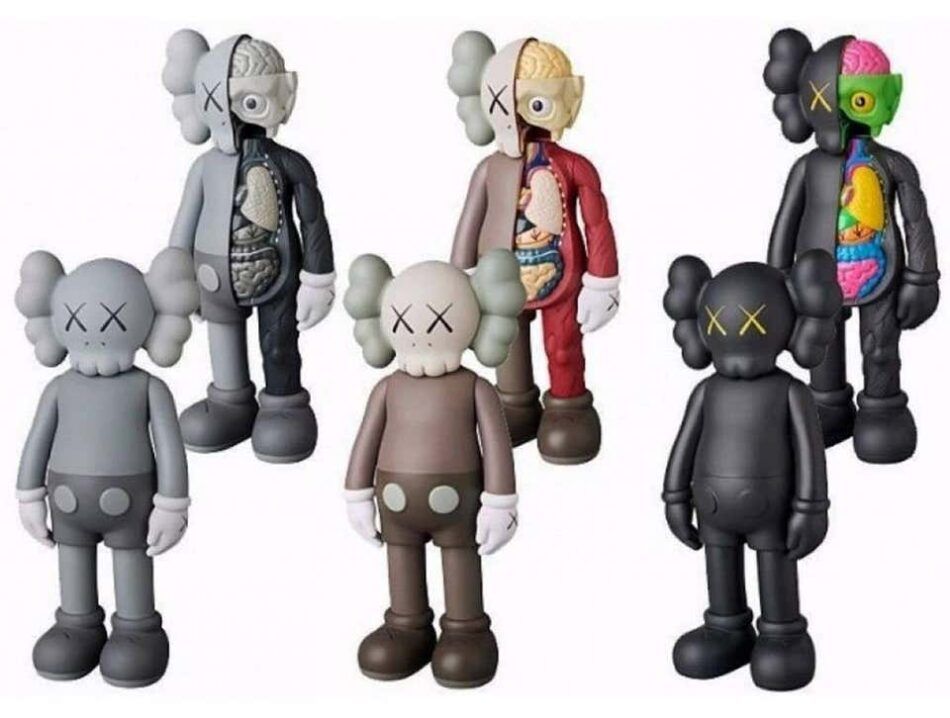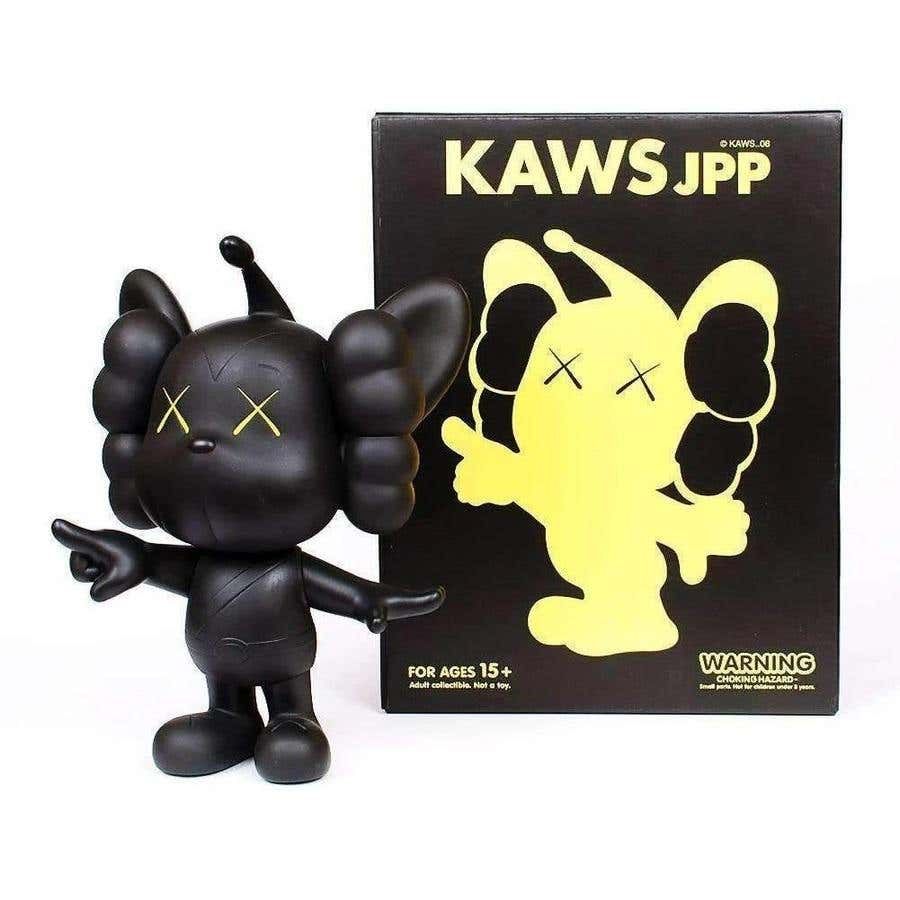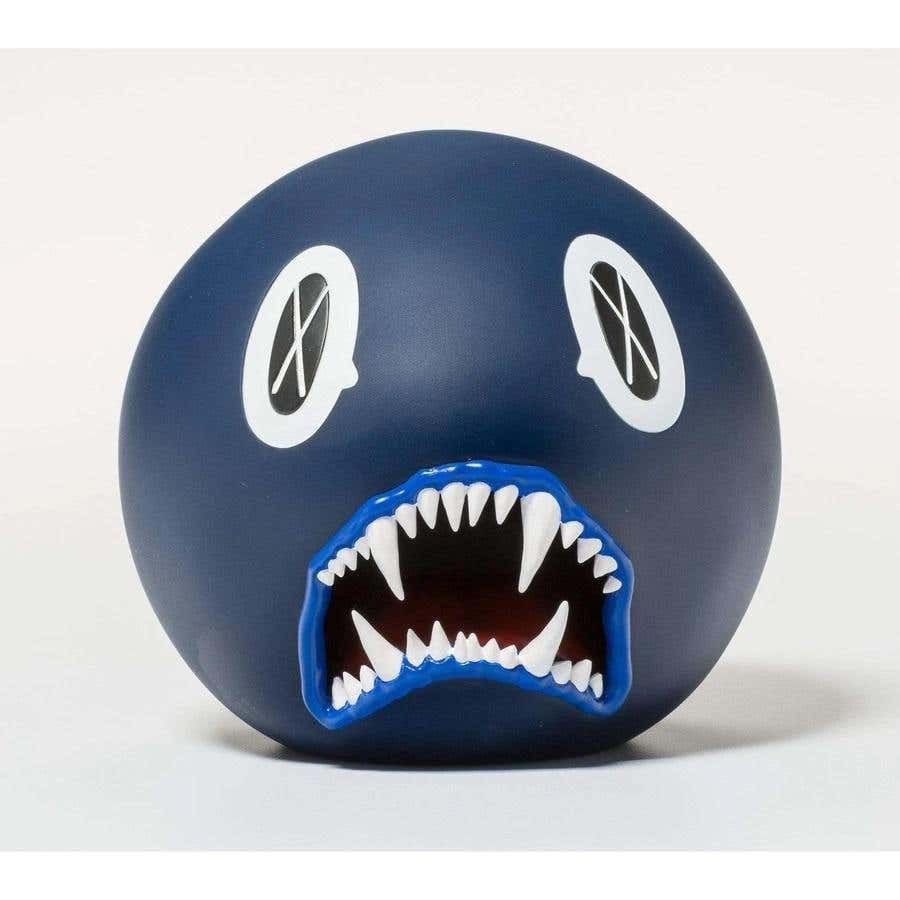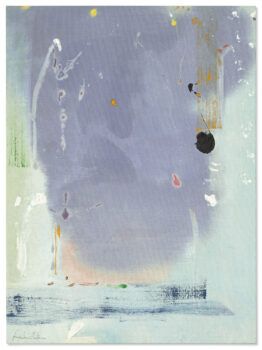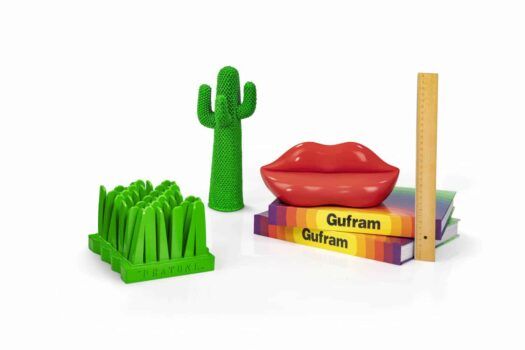Designer toys have reignited some primal human instincts. Case in point: KAWS. Since graffiti tagger turned contemporary artist Brian Donnelly (aka KAWS) released his first Companion, in 1999, a generation of collectors has emerged and created a new, incredibly dynamic market. “If you’ve come into contact with art toys, it’s because of KAWS,” writes ARTnews.
KAWS galvanized the inner “hunter-gatherer” of über-collector Selim Varol (Instagram @tolykio), known as the Toy Giant. “I was a toy and comic collector before I started collecting Brian’s works,” says Varol, whose holdings now include “every KAWS sculpture and print edition ever released, plus lots of ephemera and a few originals.” The approximately 700 items constitute “the most important part of my collection,” he says.
Part of KAWS’s appeal is “his counterculture or rebuttal of the traditional world of art,” says Jay Rutland, creative director of Maddox Gallery. “Commercialization is something that the fine-art world tends not to encourage, yet KAWS has leveraged partnerships with brands like Bounty Hunter, Uniqlo and Dior to shape-shift between the worlds of art, fashion and design.”
In the process, Rutland notes, he has brought an entirely new audience into the contemporary sphere. “Even people who don’t follow the art world know about the KAWS Companion at Mount Fuji and in the Hong Kong Harbor.” And with a 2021 survey show at the Brooklyn Museum, called “What Party,” KAWS’s art reached a new pinnacle of legitimacy and popularity.
Unfortunately, with name recognition like this comes a proliferation of fakes. Varol warns that about 50 percent of the KAWS toys he has compared against the ones in his collection (all purchased from KAWS) have turned out to be counterfeits.
Read on for guidance on how to legit check a KAWS figure for authenticity.
INSPECT THE QUALITY
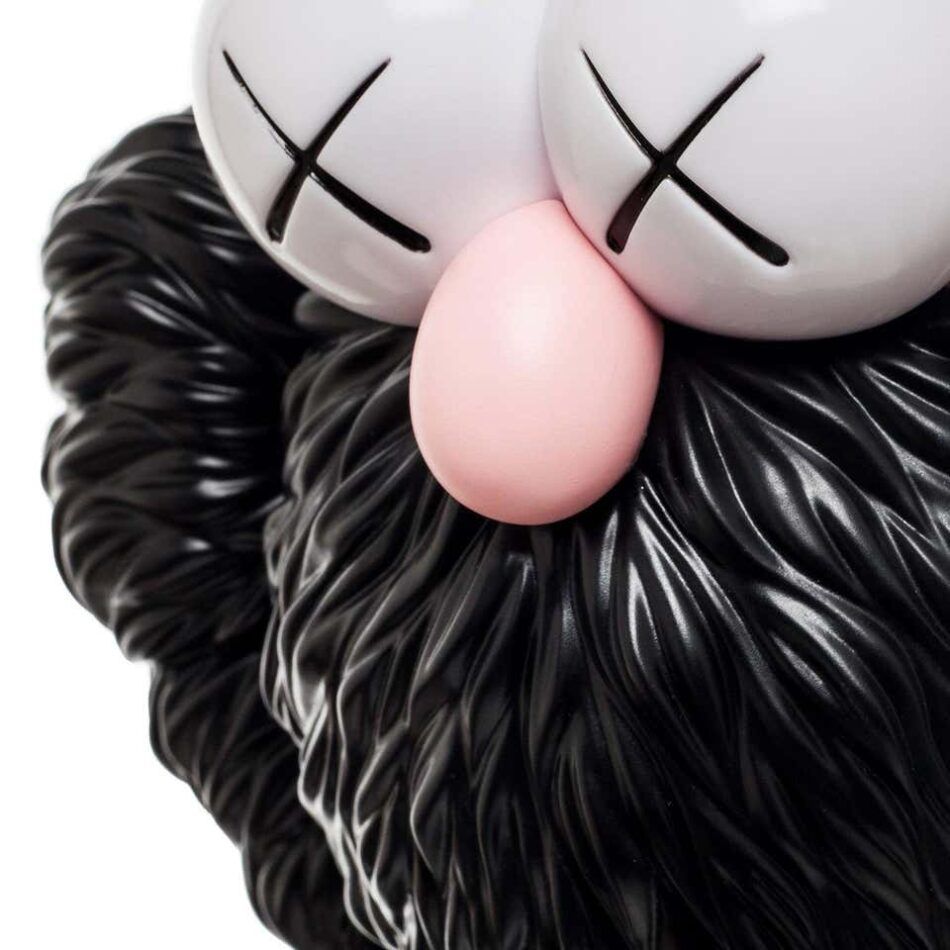
“I have almost 5,000 designer toys in my collection, and only James Jarvis’s Amos toys and Coarse figures reach KAWS’s level of perfection,” says Varol, explaining that “if necessary, Brian sends production models back and forth up to 10 times before he approves the quality.”
In contrast, he notes, “the majority of fakes are poorly produced and have flaws at their joints, articulation points and paint.”
From the Companion to the Chum, all authentic KAWS figures will feel solid and dense. If it’s hollow, it’s not a KAWS. And be skeptical of any product marked “factory error.” KAWS spends a great deal of time perfecting every limited-edition design and would never release a less-than-flawless creation. Smudged, deformed or misaligned details are highly unlikely on an authentic KAWS — it’s more probable that “factory error” and “sample” are simply more appealing terms for “unauthorized copy.”
Of course, if a doll is preowned and unboxed, a few dings and scratches may appear even on a real KAWS. Tip: If you’re buying online, always check pictures of the exact figure for sale.
What to Check on a KAWS Figure
| Paint | Clean, precise and even |
| Proportions | Symmetry consistent with the original design |
| Finish | Smooth texture without bumps or rough spots |
| Condition | No scratches, dents or signs of wear for boxed toys |
EDUCATE YOURSELF
“I always recommend doing some research on artists before you purchase any of their works,” says Rutland. Learn what has been released. For example, was a certain model ever produced in a particular colorway? Or with certain dimensions? Look up images on reliable sources.
One great repository of information is KAWS’s own boutique, OriginalFake; although it closed in 2013, its archive is still available online. Scrolling through the Instagram and Facebook accounts of KAWS collectors will help sharpen your senses when it comes to authenticating a KAWS doll. Familiarize yourself with the nuances of a specific model and study images of the real deal. (Varol recommends @case_studyo, @leagueoto, @pirovino and @jr — in addition to his own account, @toykio.) It’s a plugged-in community, so it can be worth your while to follow and even connect directly to its members. Many of them may be willing to offer advice on authenticating pieces.
Varol cautions, however, that becoming knowledgeable about KAWS will take time: “There are a lot of websites, articles and even an app about authentication, but they just can’t cover everything.” (Asked for the app’s details, he said it “doesn’t work anyway, so no need to give it a name.”)
Get Your KAWS Toy Facts Straight
| Product Stamp | Look for the product’s correct year of creation and © KAWS stamped on the bottom of the doll. Some models should have the series name or toy manufacturer on there as well. |
| Edition Size | The smaller the edition, the higher the demand and price. |
| Price | Be wary of price tags that seem too good to be true. |
| Release Date | Make sure you know the year the edition of the figure you’re considering was released. |
NOTE THE FINE DETAILS
Legitimacy checks begin with the KAWS box. An authentic one will have a hologram label that changes color as you move the box. Is the box’s size correct? The color? How about the font size and spacing, everywhere on the packaging? Does it have the correct design on the front? Inspect even the smallest detail — it may be the one that a lazy counterfeiter overlooked, and if you do the same, it can be an expensive mistake.
As for the toy itself, again, every element counts. Is the color right? Many fakes get the nuances wrong, so be sure to compare the color of your doll to those shown in images of authentic pictures. How about the finish? Check if your particular figure should be matte or shiny. Are there discrepancies in the X of the eyes or the placement of design features? For example, a four-foot KAWS Dissected Companion should have 10 dots for the ribs. Many fakes only have nine.
The XX logo on a KAWS figure is one of the most recognizable features and can be a helpful indicator of authenticity. In many toys, it is incorporated into the anatomy or costume, like the six Xs on the Companion model. On the KAWS Separated and Passing Through Companion, it is on the hands and feet. Be wary of KAWS toys with Xs that are misaligned or smudged or show bleeding. Look closely to make sure the X eyes are symmetrical.
Familiarize yourself with the details of the particular KAWS figure you are interested in purchasing.
Look at the KAWS Box and the Model’s Original Options
| Box Size | Make sure the box is the right size and color and feels sturdy. |
| Stickers | Inspect the holographic and release date stickers. |
| Box Design | Compare the box font and type size as well as other design elements to those of an authentic box. |
| Colorways | Research to see if the colors are those that the doll under consideration originally came in. |
| Toy Size | Check that the piece you’re considering is one of the available sizes. Some figures were created in a single size, while others come in various ones. |
BUYER BE AWARE
If you’re in the market for a KAWS toy, don’t take chances. “A reputable gallery will never leave the authenticity of the work open to question,” says Rutland. “And the price will always be reflective of the market value. If the price is too good to be true, it most likely is.”
Varol gives similar advice about collectors, stressing the need to work with “very reputable” ones. He also recommends requesting original purchase receipts. However, “in the long run,” he says, “I strongly believe that there will be an entity like the Warhol foundation or Banksy’s Pest Control to authenticate KAWS items.”
